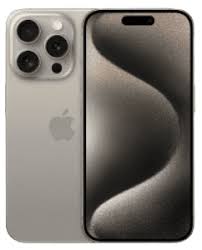Introduction:
Apple’s iPhone 17 Pro Max set out to fix two perennial smartphone complaints: overheating under sustained load and fast battery drain. By combining an Apple-designed vapor chamber iPhone 17 thermal solution, a redesigned thermally conductive aluminum unibody, a much larger battery, and the power-efficient A19 Pro silicon, Apple has dramatically improved iPhone 17 Pro Max cooling, extended iPhone 17 Pro Max battery life and boosted A19 Pro thermal efficiency in real-world use. This article explains exactly what Apple changed, why those changes matter, and how you can get the most battery life and lowest operating temperatures from your iPhone 17 Pro Max. Apple+2Apple+2
Cooling, Battery & Performance — How Apple Solved Overheating and Drain on the iPhone 17 Pro Max:
The problem Apple needed to solve — why modern phones overheat and drain fast:

Smartphones overheat for a few interlocking reasons:
- High sustained CPU/GPU workloads (gaming, 4K recording, heavy AR/AI tasks) produce continuous heat.
- Compact packaging restricts heat dispersion; heat builds up around SoC and battery.
- Thin metal/ceramic materials that look and feel premium can trap heat if not managed.
- Active power draw from 5G, Wi-Fi 7, high-brightness OLEDs, and fast refresh rates increases consumption.
Overheating isn’t just a comfort problem — it triggers thermal throttling (reduced CPU/GPU clocks) and can rapidly shorten battery life under intense usage. That’s why Apple targeted cooling, battery capacity, and silicon efficiency together in the iPhone 17 Pro Max.
Hardware redesign — the vapor chamber, aluminum unibody, and internal layout:
Vapor chamber cooling — what it is and why it matters:
Apple moved from graphite sheets/heat spreaders to an internal vapor chamber in the iPhone 17 Pro and 17 Pro Max. Vapor chambers work passively (no power draw) by evaporating a liquid at the hot spot and condensing it on cooler areas — spreading heat much more uniformly across the device and preventing hotspots. This two-dimensional heat spread is far more effective than narrow heat pipes or single graphite sheets, especially in a phone’s thin envelope.
Apple’s newsroom confirms the 17 Pro models use an Apple-designed vapor chamber laser-welded into a thermally conductive aluminum unibody — a construction that both strengthens the frame and acts as a heat sink to pull heat away from the A19 Pro and camera region. The integration increases the effective cooling area and lowers peak operating temperatures.
Aluminum unibody as a thermal conductor:
Apple’s finished design uses aluminum for improved heat conduction compared with previous material choices. Because aluminum has high thermal conductivity, the aluminum frame helps spread heat across a larger external surface so the internal vapor chamber can move heat to where it can dissipate more effectively. Reports and hands-ons mention the new brushed/aluminum surfaces feel cooler to the touch under load compared with some titanium builds used previously.
Internal space reallocation for larger battery and thermal clearance:
Apple re-engineered internal layout to create both larger battery capacity and room for the vapor chamber. The iPhone 17 Pro Max now ships with a 5,088 mAh battery (up ~8.6% vs prior generation), which both gives longer endurance and allows more headroom for thermal buffer (battery cells farther from hottest components). Regulatory filings and Apple spec sheets list these capacities and Apple’s documentation highlights the design choices created “significant additional room for battery capacity.”
The A19 Pro chip — performance AND efficiency by design:
Node, architecture and efficiency improvements:
Apple’s A19 Pro (reported in launch coverage) is built on an advanced 3nm process and includes architectural improvements that prioritize single-thread performance while improving overall energy efficiency. The combination of a more efficient process node and improved CPU/GPU microarchitecture reduces the power needed for common tasks and dramatically lowers heat per unit of work compared with older silicon. Early reporting and Apple claims highlight “best-ever performance and an enormous leap in battery life.”
On-chip thermal and power management blocks:
Modern SoCs include integrated power management and ISP/Neural Engine blocks that dynamically shift workloads. The A19 Pro’s neural engine offloads AI/ISP tasks, which reduces the CPU/GPU burden and therefore lowers thermal output for camera processing, Live HDR, and real-time AI features — critical contributors to total heat under modern smartphone use. Apple pairs that with iOS scheduling and thermal governors to keep workload distributed and efficient.
Battery upgrades — more capacity, smarter charging, and thermal safety:
Bigger battery: 5,088 mAh and what that buys you:

Apple lists the iPhone 17 Pro Max battery capacity as 5,088 mAh — the largest iPhone battery ever — and advertises up to 39 hours of video playback in the Pro Max model. The larger capacity means that for the same power draw, battery percentage drops slower, and the device has thermal margin before the battery hits active thermal protection thresholds. Regulatory reporting and Apple’s specs confirm this number and the improved video-playback lifetime.
Charging speeds and thermal management during charge:
Apple increased charging throughput via updated MagSafe/Qi2.2 support for higher peak charging (reports indicate improvements), but crucially they also tuned charge profiles and thermal throttling logic to avoid excessive heat during fast charging. Smart charge throttling reduces charge current if the device temperature rises too high, protecting battery health while balancing user need for rapid top-ups.
Battery chemistry & cell layout improvements
Apple’s fine-grain cell engineering and improved energy density allow higher capacity in the same (or smaller) space. Additionally, by distributing cells and adding thermal clearance between hot components and battery elements, Apple reduces the chance of thermal propagation that could accelerate battery temperature rise. This is a subtle but important change for sustained high-power workloads like gaming and 4K recording.
Software plays — iOS thermal management, workload scheduling and Galaxy of tweaks:
Hardware alone doesn’t solve everything. Apple implemented a layered software approach:
iOS thermal governors and performance sliders:
iOS includes thermal governors that dynamically scale CPU/GPU clocks, frame rates, and GPU workloads based on temperature feedback. For the iPhone 17 Pro Max, Apple adjusted the governor curves to prioritize consistent sustained performance rather than short-lived peak clocks followed by deeper throttling — this results in smoother gaming sessions and fewer sudden slowdowns. Hands-on impressions report “40% better sustained performance” in some tasks, which reflects this combined hardware+software approach.
Smart camera processing offload:
Many camera functions are offloaded to the Neural Engine and ISP, letting the CPU/GPU remain cooler during extended video captures. Features like multi-frame stacking, HDR processing, and live computational effects are orchestrated to prevent overheating — Apple sequences workloads and pipeline bursts intelligently to keep temperatures manageable.
Adaptive display & brightness optimization:
Higher peak brightness (reported up to 3,000 nits) is useful outdoors but costly for heat and battery draw. Apple uses adaptive brightness and local display optimizations to match needed brightness levels, reduce panel power when full brightness isn’t necessary, and thus limit one important contributor to heat. That helps maintain cooler skin temps and prolong battery life in real scenarios.
Thermal testing & real-world performance — what early reviewers are seeing:
Benchmarks vs sustained workloads:
Independent reviewers and early hands-on testing show the iPhone 17 Pro Max holds sustained clock rates better than some predecessors and keeps temperatures lower under gaming and long video encode workloads — a direct benefit of vapor chamber + A19 Pro + software tuning. Tech reviewers report less aggressive thermal throttling and steadier frame rates in long gaming sessions.
Camera & video heat management:
Recording long 4K/60 or 8K clips is a heavy thermal load. Early tests indicate the iPhone 17 Pro Max can record longer clips with less thermal throttling and fewer forced stoppages when compared to older models — thanks to the combined cooling and neural offloads. Real-world clips remain stable, and thermal warnings are less frequent in initial reviews.
Battery life in daily use:
Apple claims up to 39 hours video playback for the Pro Max; real-world mixed usage (calls, 5G, camera use, gaming, background sync) shows significant uplift over previous gens — many reviewers report multiple hours more screen time in practical conditions, which matches Apple’s stated gains. MacRumors and Tom’s Guide compare across models and confirm the Pro Max demonstrates meaningful battery improvements.
Design tradeoffs — why Apple chose aluminum and vapor chamber over other options:
Aluminum vs titanium and cosmetic vs thermal tradeoffs:
Apple’s recent history included premium titanium bodies that were lighter and very rigid but poorer at dissipating heat compared with aluminum variants. By moving to a thermally conductive aluminum unibody with integrated vapor chamber, Apple accepted a tactile difference for clear thermal benefit: surfaces run cooler and internal heat is distributed more efficiently. This also simplifies laser welding of the vapor chamber into the structure.
Packaging compromises and IP ratings:
Apple retained IP68 water/dust resistance while adding thermal plumbing, which is a nontrivial engineering feat: the vapor chamber and internal passages must be sealed and structural while ensuring no ingress compromise. Apple’s engineering demonstrates the feasibility of adding thermal mass without sacrificing ruggedness.
Practical tips to keep your iPhone 17 Pro Max cool and maximize battery life:
Even with Apple’s improvements, user behavior matters. Here are evidence-based tips:
- Avoid gaming while charging — charging adds heat; gaming increases it. Combined they accelerate thermal rise.
- Use adaptive brightness and Auto Low Power when possible — reduces display heat and draw.
- Prefer eSIM for lower internal components (Apple notes eSIM-only internal variants can have more space/battery capacity in some markets). Check local Apple notes.
- Limit background 5G-heavy tasks when not needed — 5G radios can increase heat during sustained high throughput.
- Keep phone out of direct sun — external heating compounds internal heat.
- Update iOS promptly — Apple’s updates often include thermal and power management tweaks.
- Avoid cheap after-market cases that trap heat — choose cases with good thermal venting or thin profiles for hot workloads.
What this means for long-term battery health and resale value:
Because Apple manages charge curves and thermal behavior more conservatively during rapid charging and heavy workloads, long-term battery degradation slows. A battery that stays cooler under use ages more slowly, so the iPhone 17 Pro Max should retain better battery health over multiyear ownership — which supports better resale and trade-in values later. Apple’s battery health tools and optimized charging patterns further protect longevity.
External links:
- Apple newsroom: “Apple unveils iPhone 17 Pro and iPhone 17 Pro Max.” Apple
- Apple iPhone 17 specs page (battery & performance notes). Apple
- The Verge coverage of battery and performance claims. The Verge
- TechRadar hands-on and design analysis. TechRadar
- PhoneArena and T3 analysis on vapor chamber impact and sustained performance. PhoneArena+1
- MacRumors battery capacity report. MacRumors




Leave a Reply